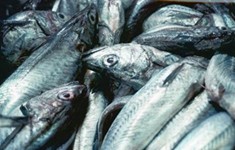
“The Status of New Zealand Fisheries 2012” shows fisheries management actions have created a noticeable improvement during the past year for the minority stocks where there has been concern about overfishing. Today, only 0.5 percent of New Zealand’s fish stocks fall below the hard limit where fisheries closures may be needed. These have now either been closed or have had significant reductions in allowable catches. Healthy stocks make up 96.6 percent of landings where the status is known.
Highlights for the report include the hoki fishery being fully rebuilt, an improved outlook for Chatham Rise orange roughy, historic highs for Campbell Island southern blue whiting and significant increases in numbers of several South Island stocks of gurnard, elephantfish and John dory.
New total allowable catch reductions or voluntary catch limits have been initiated this year to rebuild five stocks of bluenose and one stock each of rock lobster and paua.
New Zealand has also, as a member of the Commission for Conservation of Southern Bluefin Tuna, continued to implement a management plan to rebuild the stock, which occurs seasonally in our waters.
“Some commentators do not take the trouble to understand and report what is really going on. We recognize this is a highly technical area and we are happy to clarify,” said Pamela Mace, principal advisor for fisheries science. “For example, simply because a stock is below management target does not mean it is ‘overfished’ or ‘in danger,’ as has been repeatedly reported by the media and some environmental organizations. The commentators overlook that New Zealand’s fisheries get consistently high ratings in independent international studies.”





